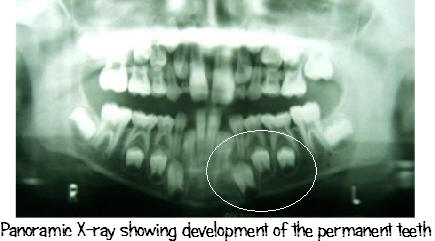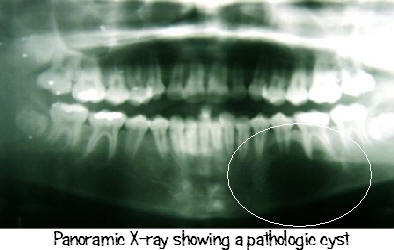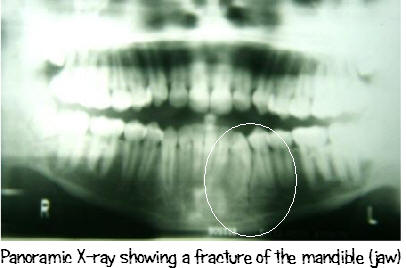Panoramic x-rays: Why are they important?
Panoramic or Panorex (a type of film) X-ray is very commonly done on the "initial" visit to your pediatric dentist. As the name suggests, a panoramic X-ray gives a broad overview of your child's entire mouth as it makes a complete half circle from ear to ear to produce a complete two dimensional representation of all your child's teeth. It gives our dentists an overall picture of all your child's teeth, sinuses, jaw bones, and other hard and soft tissues of his/her head and neck.
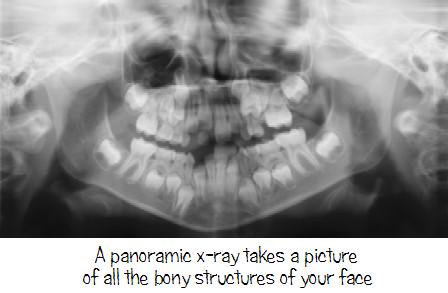
One advantage of the panoramic x-ray is its ease of use. Unlike other x-rays where the film is placed inside your child's mouth, the panoramic film is contained in a machine that moves around your child's head. Some people may be familiar with the panoramic x-ray because it is usually taken when the wisdom teeth (third molars) are being evaluated for possible removal. The panoramic x-ray may also reveal some very large cavities and advanced gum disease, but it is not as precise as bitewing or periapical x-rays and can not be used to routinely detect tooth decay.
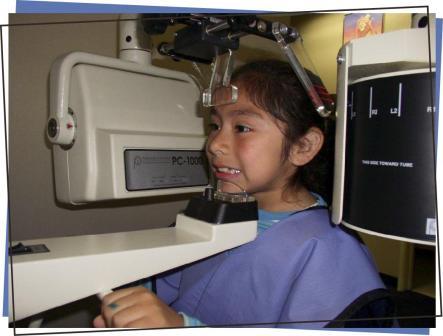
The panoramic x-ray has many other applications such as revealing past or present TMJ (jaw joint) disorders, those who require full or partial removable dentures, dental implants, or braces. This type of x-ray is also helpful for patients who are at risk or suspected of having oral cancer or other tumors of the jaw, have impacted teeth (especially wisdom teeth), have had any recent trauma to the face or teeth (i.e. can help identify a fractured jaw), and for those who can not tolerate other types of films (severe gaggers).
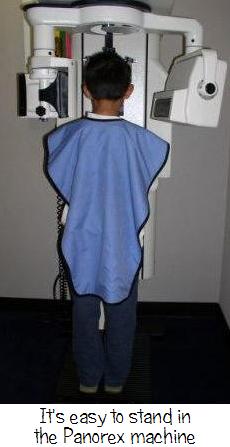 The panoramic x-ray can also identify some very uncommon problems, such as calcification within the carotid artery (in the neck) that may indicate the potential for a stroke or recurrent sinus infections in older people.
The panoramic x-ray can also identify some very uncommon problems, such as calcification within the carotid artery (in the neck) that may indicate the potential for a stroke or recurrent sinus infections in older people.
As for panoramic x-rays; however, the nature of the image and technique precludes the use of a thyroid shield. Important parts of the image would simply be covered by the shield and jaw lesions and growths may be missed entirely. Therefore, we carefully balance the need for a panoramic x-ray with the risks of exposure to dental x-rays.
The panoramic x-ray is an important part of a thorough dental examination. It is recommended that a panoramic x-ray be taken once every five years for your child. Although the panoramic x-ray does not provide as much detail when evaluating the teeth and gums as other dental x-rays, it will pick-up potential problems that the other smaller x-rays cannot. The panoramic x-ray's usefulness can not be over emphasized. The panoramic x-ray is not intended as a substitute for bitewing x-rays or periapical x-rays since these films specifically function to identify decay in its early stage, fractures of specific teeth, or abscesses etc.
A Panoramic x-ray gives you a big picture view
of the entire mouth!
